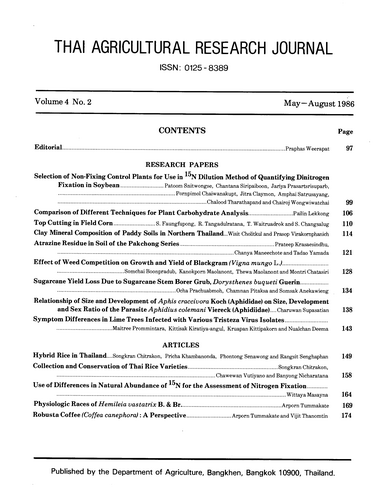Atrazine Residue in Soil of the Pakchong Series
Abstract
Residues of atrazinge in soil of the Pakchong series (Oxic paleustults) in conventionally cultivated plots of field corn were studied at the National Corn and sorghum Research Center in Pak Chong Districe of Nakhon Ratchasima Province in Thailand. Soil was sampled at different depths and different times after herbicide application. Soil samples were analysed by gas chromatography equipped with a FTD detector.
A few hours after applying atrazine at a rate of 3.75 kg a.i.ha-1 the atrazine content of the soil was recorded at 2.154 ppm for 0-5 cm, 1.403 ppm for 5-10 cm, and 0.923 ppm for 10-15 cm. The atrazine content of the soil decreased repidly, having a half-life of about 19 days. Although crops of wheat after corn had not grown well in the study area for the past six years, only traces of atrazine residue (less than 0.001 ppm) were detected to a depth of 50 cm. Residual effects from the use of atrazine were able to be discounted as the cause of the poor wheat growth.
Downloads
Published
How to Cite
Issue
Section
License
Thai Agricultural Research Journal



